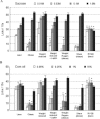Food reward in the obese and after weight loss induced by calorie restriction and bariatric surgery
- PMID: 22616827
- PMCID: PMC3464359
- DOI: 10.1111/j.1749-6632.2012.06573.x
Food reward in the obese and after weight loss induced by calorie restriction and bariatric surgery
Abstract
Increased availability of tasty, energy-dense foods has been blamed as a major factor in the alarmingly high prevalence of obesity, diabetes, and metabolic disease, even in young age. A heated debate has started as to whether some of these foods should be considered addictive, similar to drugs and alcohol. One of the main arguments for food addiction is the similarity of the neural mechanisms underlying reward generation by foods and drugs. Here, we will discuss how food intake can generate reward and how behavioral and neural reward functions are different in obese subjects. Because most studies simply compare lean and obese subjects, it is not clear whether predisposing differences in reward functions cause overeating and weight gain, or whether repeated exposure or secondary effects of the obese state alter reward functions. While studies in both rodents and humans demonstrate preexisting differences in reward functions in the obese, studies in rodent models using calorie restriction and gastric bypass surgery show that some differences are reversible by weight loss and are therefore secondary to the obese state.
© 2012 New York Academy of Sciences.
Figures







Similar articles
-
Modulation of taste responsiveness and food preference by obesity and weight loss.Physiol Behav. 2012 Nov 5;107(4):527-32. doi: 10.1016/j.physbeh.2012.04.004. Epub 2012 Apr 12. Physiol Behav. 2012. PMID: 22521912 Free PMC article. Review.
-
"Liking" and "wanting" of sweet and oily food stimuli as affected by high-fat diet-induced obesity, weight loss, leptin, and genetic predisposition.Am J Physiol Regul Integr Comp Physiol. 2011 Nov;301(5):R1267-80. doi: 10.1152/ajpregu.00314.2011. Epub 2011 Aug 17. Am J Physiol Regul Integr Comp Physiol. 2011. PMID: 21849633 Free PMC article.
-
A Role for GLP-1 in Treating Hyperphagia and Obesity.Endocrinology. 2020 Aug 1;161(8):bqaa093. doi: 10.1210/endocr/bqaa093. Endocrinology. 2020. PMID: 32516384 Free PMC article. Review.
-
Food reward, hyperphagia, and obesity.Am J Physiol Regul Integr Comp Physiol. 2011 Jun;300(6):R1266-77. doi: 10.1152/ajpregu.00028.2011. Epub 2011 Mar 16. Am J Physiol Regul Integr Comp Physiol. 2011. PMID: 21411768 Free PMC article. Review.
-
Roux-en-Y gastric bypass surgery changes food reward in rats.Int J Obes (Lond). 2011 May;35(5):642-51. doi: 10.1038/ijo.2010.174. Epub 2010 Aug 31. Int J Obes (Lond). 2011. PMID: 20805826 Free PMC article.
Cited by
-
Roux-en-Y gastric bypass in rat reduces mu-opioid receptor levels in brain regions associated with stress and energy regulation.PLoS One. 2019 Jun 20;14(6):e0218680. doi: 10.1371/journal.pone.0218680. eCollection 2019. PLoS One. 2019. PMID: 31220174 Free PMC article.
-
Pilot randomized trial demonstrating reversal of obesity-related abnormalities in reward system responsivity to food cues with a behavioral intervention.Nutr Diabetes. 2014 Sep 1;4(9):e129. doi: 10.1038/nutd.2014.26. Nutr Diabetes. 2014. PMID: 25177910 Free PMC article.
-
Taste of Fat and Obesity: Different Hypotheses and Our Point of View.Nutrients. 2022 Jan 27;14(3):555. doi: 10.3390/nu14030555. Nutrients. 2022. PMID: 35276921 Free PMC article. Review.
-
Opioids and bariatric surgery: A review and suggested recommendations for assessment and risk reduction.Surg Obes Relat Dis. 2019 Feb;15(2):314-321. doi: 10.1016/j.soard.2018.11.019. Epub 2018 Nov 23. Surg Obes Relat Dis. 2019. PMID: 30661954 Free PMC article. Review. No abstract available.
-
Link Between Increased Satiety Gut Hormones and Reduced Food Reward After Gastric Bypass Surgery for Obesity.J Clin Endocrinol Metab. 2016 Feb;101(2):599-609. doi: 10.1210/jc.2015-2665. Epub 2015 Nov 18. J Clin Endocrinol Metab. 2016. PMID: 26580235 Free PMC article. Clinical Trial.
References
-
- Sjostrom L, et al. Effects of bariatric surgery on mortality in Swedish obese subjects. N. Engl. J. Med. 2007;357:741–752. - PubMed
-
- Ravussin E, Bogardus C. Energy balance and weight regulation: genetics versus environment. Br. J. Nutr. 2000;83(Suppl 1):S17–S20. - PubMed
-
- Gluckman PD, Hanson MA, Beedle AS. Early life events and their consequences for later disease: a life history and evolutionary perspective. Am. J. Hum. Biol. 2007;19:1–19. - PubMed

